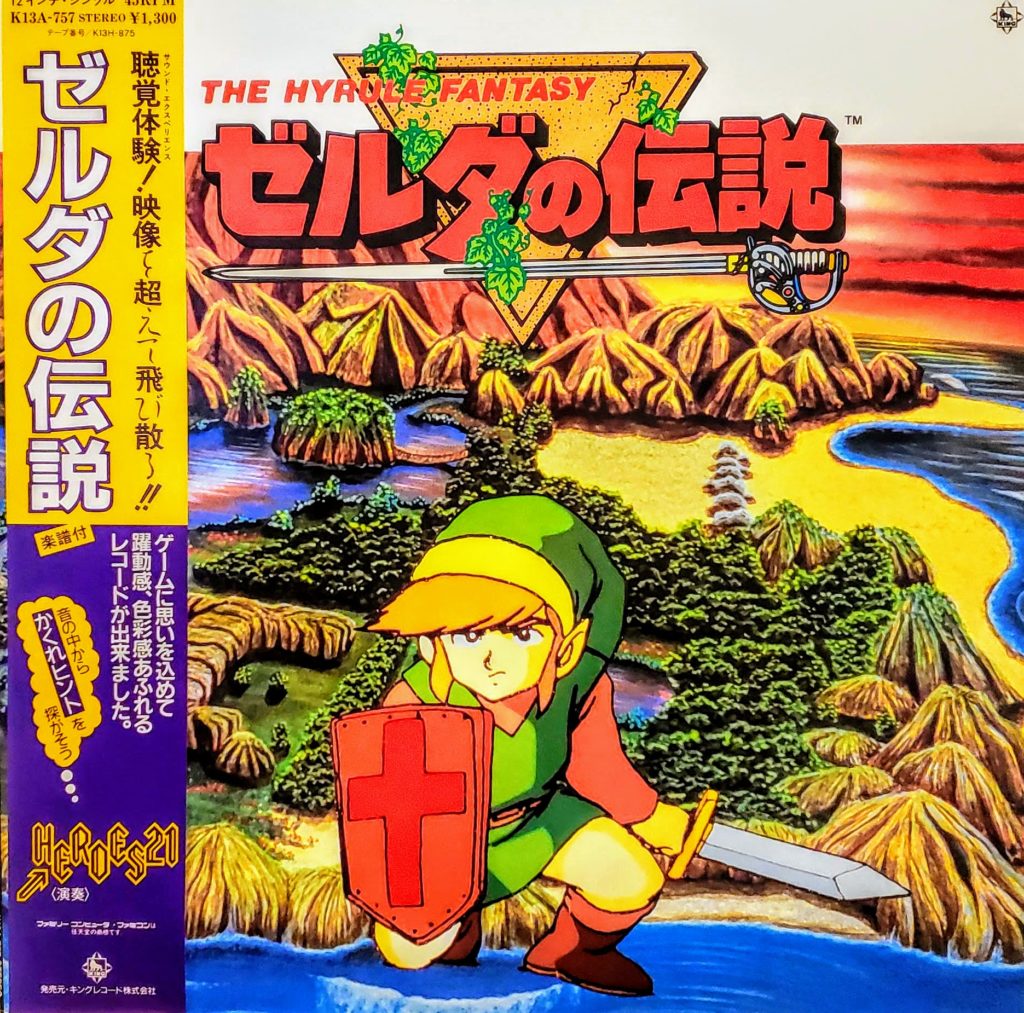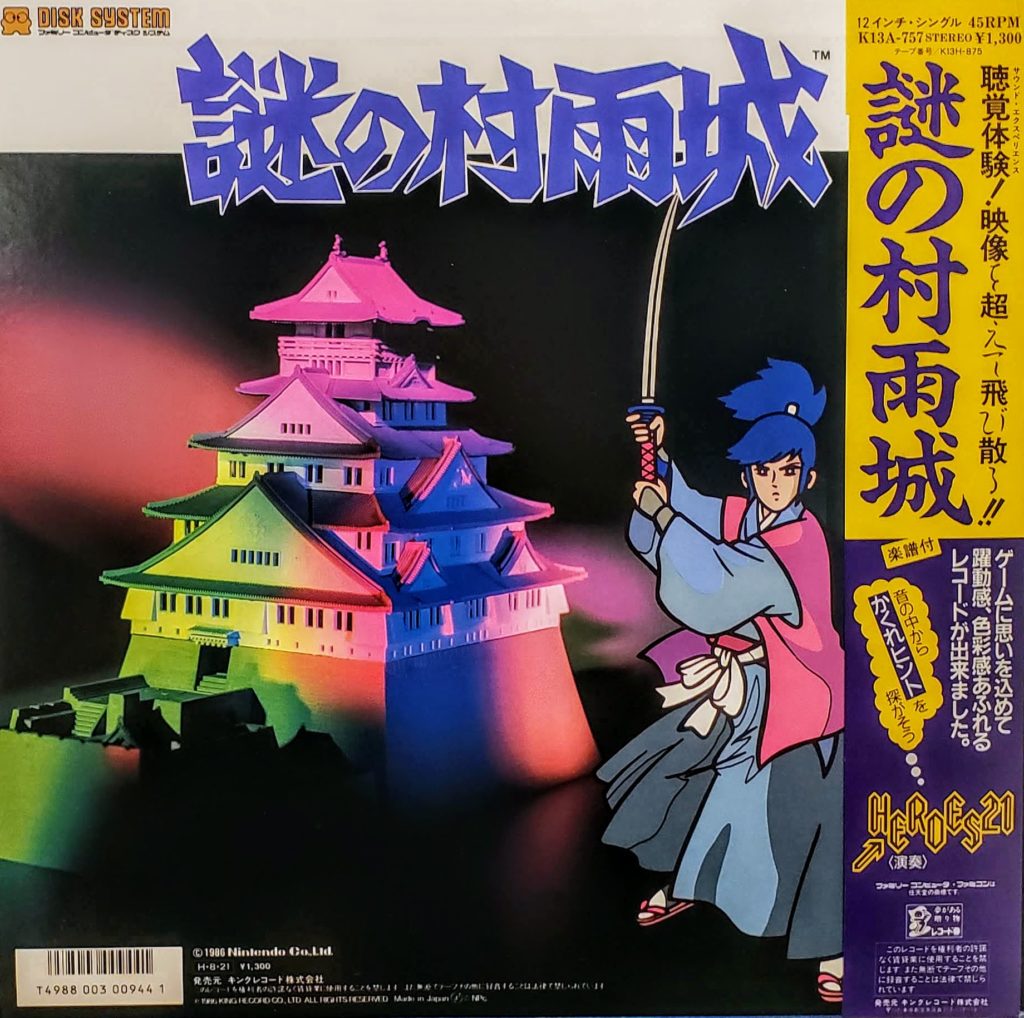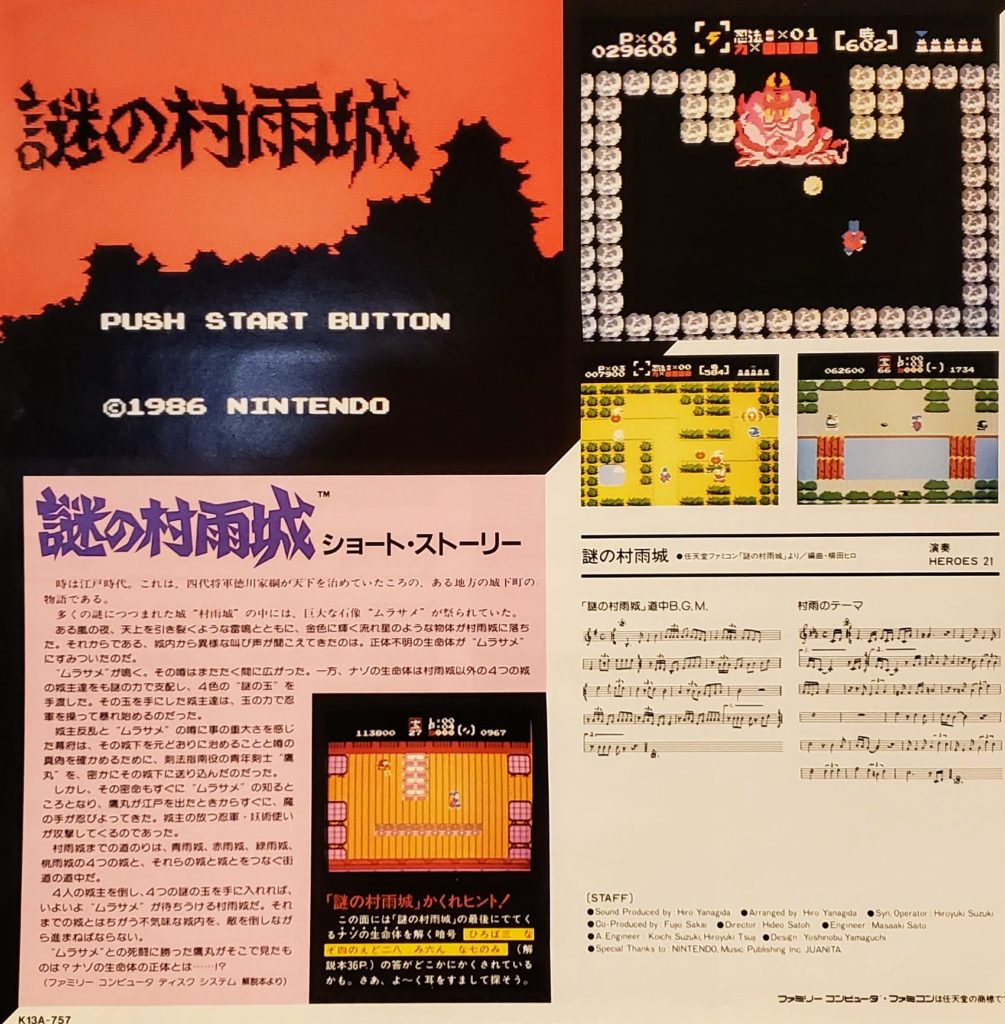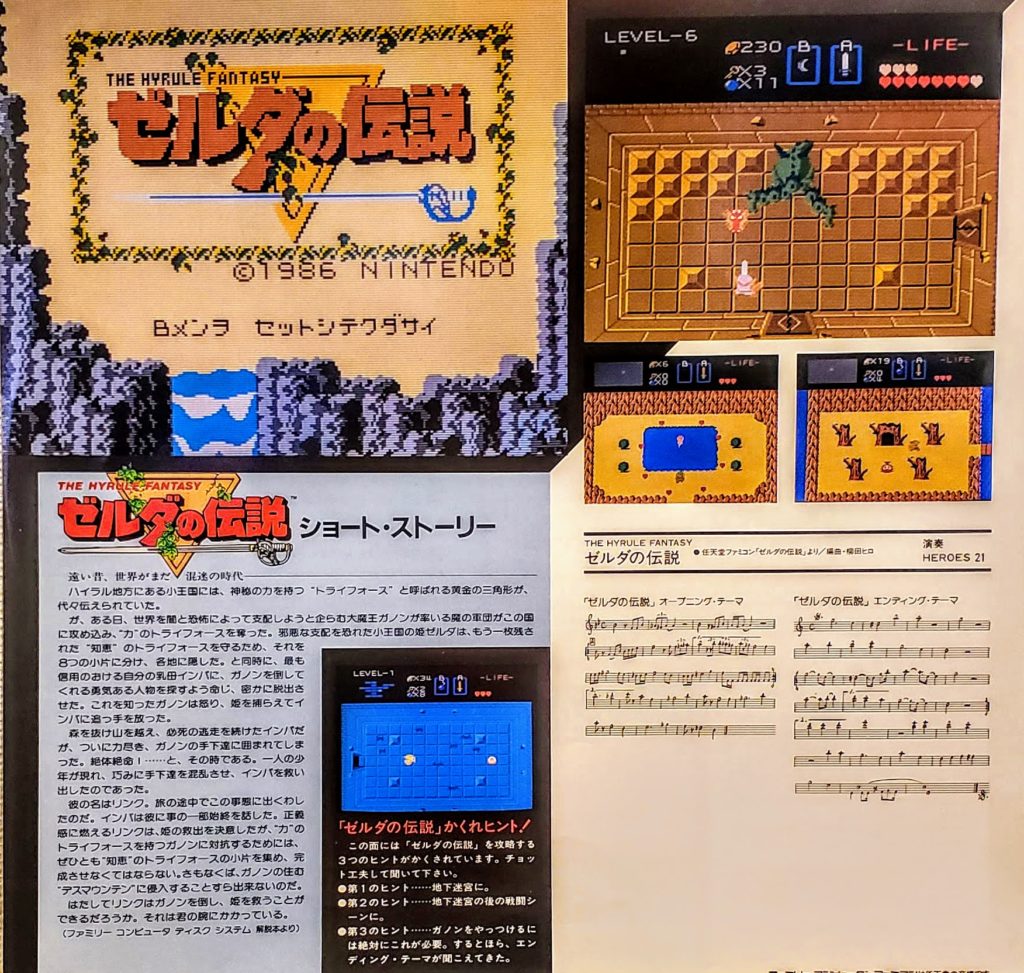It must be said that 1986 was a hell of a year for video game music. According to the VGMdb, only one game music album came out the year prior; The Return of Video Game Music. In 1986, nearly 40 records and singles with some connection to video games were released. That’s nearly one a week.
Some stone-cold game music classics came out that year. The first GMO releases with music by companies like Capcom, Namco, Sega, and Nintendo all went to shelves in 1986. Same for the Dragon Quest Suite, the first commercially released LP featuring a symphonic arrangement of a game music soundtrack.
Those are in-demand titles by game music collectors, but at least most of them have been re-issued at some point. For example, you can pick up CD copies of Famicom Music relatively affordably online (and I suggest you do, that’s a fantastic album).
But a lot of key titles from 1986 remain out-of-print and command insane prices online. One such title is this.

Heroes 21
ゼルダã®ä¼èª¬ (The Legend Of Zelda)
謎ã®æ‘雨城 (The Mysterious Murasame Castle)
This is a two-track 12″ single. The A-side, as you can guess from the image above, features an extended remix of the theme to The Legend Of Zelda. The B-side features a mix of music from The Mysterious Murasame Castle. There is also a 7″ single with the same cover art and tracklisting, but that does not have the same music. The versions on that sound absolutely nothing like the ones here. The 7″ arrangements are more traditional, while these are wacky sample-heavy and much more experimental. They sound like Art of Noise by the way of Koji Kondo.

Speaking of Koji Kondo….
Every source I could about this record credited Koji Kondo as the performer on the album. Even on Discogs and the VGMdb. This is not true. Yes, the two tracks on this album are both based on music by Koji Kondo, but it would appear that he had absolutely nothing to do with this release. The actual performers are someone or something called Heroes 21. Their name is right there on the Obi strip, with the kanji for “performed by” (æ¼”å¥) right under them. But that fact was somehow lost to time.
So, that begs the question, who the hell is/are Heroes 21?
At first, I thought that they might be the same people who were behind Bonus 21, the group credited on the the equally hard-to-find Mario Syndrome release that also came out in 1986. The title treatment of both artists is identical, and both releases are from King Records.
However, when I compared the credits on each release, I saw that only two people appear on both, and they’re both engineers. The arrangers on both albums are different. Mario Syndrome was arranged by Shunji Inoue (currently the VP of Bandai Namco). This single was arranged by Hiro Yanagida, the keyboardist for the influential Japanese rock group The Apryl Fool who went on to a mildly successful solo career as a prog rock musician.
Doing further research (again, thanks largely to the amazing resource that is the VGMdb) I found that King Records also released a Solomon’s Key/Mighty Bomb Jack single in 1986. That release is credited to Replica 21. The arranger on that is Yoichiro Yoshikawa, a composer who put out a few albums and also worked with Togawa Jun, writing the music on her signature classic, “Suki Suki Daisuki.”
So all the artists are completely unrelated. Perhaps “_____ 21” was some kind of branding effort by King Records to lump all of their game music artists together? There’s so little information out there about these records, even less so in English, that it’s hard to say. I don’t think King Records kept the “21” formatting going in future releases either, so who knows what the deal was.
Even without the mysterious branding, these are must-have mixes for any game music aficionado. As I said, they’re really out-there, very indicative of what was happening with electronic pop music at the time. Samplers were a big deal when they came out, so there were a lot of tracks like this at the time, stuff composed almost entirely of samples. If you dig this, I recommend checking out Yellow Magic Orchestra’s Technodelic and Ryuichi Sakamoto’s Furturista, both are great albums built almost entirely out of samples.
And keep checking here to see if I ever score a copy of the 7″ version! Like I said, it’s totally different!



This is amazing. I love that the version of the Zelda theme is from the Famicom Disk System version. You can tell because there’s an extra synth channel underneath that the cart version couldn’t provide. They removed the extra sound synth capabilities to make manufacturing cheaper.
I love it.